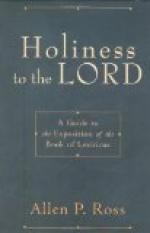GENERAL ORGANIZATION
The general organization of the machine will first be described. After this the details will be more fully explained and attention plainly directed to the various parts which require special consideration.
[Illustration: Fig. 1.]
The machine contains, as the vital element, about sixteen hundred matrices, such as are shown in Fig. 1, each consisting of a small brass plate having in one edge the female character or matrix proper, and in the upper end a series of teeth, used as hereinafter explained for distributing the matrices after use to their proper places in the magazine of the machine. There are in the machine a number of matrices for each letter and also matrices representing special characters, and spaces or quadrats of different thicknesses for use in table-work. There is a series of finger keys representing the various characters and spaces, and the machine is so organized that on manipulating the keys it selects the matrices in the order in which their characters are to appear in print, and assembles them in a line, with wedge-shaped spaces or justifiers between the words. The series of matrices thus assembled in line forms a line matrix, or, in other words, a line of female dies adapted to mold or form a line of raised type on a slug cast against the matrices. After the matrix line is composed, it is automatically transferred to the face of a slotted mold into which molten type-metal is delivered to form a slug or linotype against the matrices. This done, the matrices are returned to the magazine and distributed, to be again composed in new relations for succeeding lines.
[Illustration: Fig. 2.]
Fig. 2 illustrates the general organization of the machine.
A represents an inclined channelled magazine in which the matrices are stored. Each channel has at the lower end an escapement B to release the matrices one at a time. Each of these escapements is connected by a rod C and intermediate devices to one of the finger-keys in the keyboard D. These keys represent the various characters as in a typewriter. The keys are depressed in the order in which the characters and spaces are to appear, and the matricies, released successively from the lower end of the magazine, descend between the guides E to the surface of an inclined travelling belt F, by which they are carried downward and delivered successively into a channel in the upper part of the assembling elevator G, in which they are advanced by a star-shaped wheel, seen at the right.
The wedge-shaped spaces or justifiers I are held in a magazine H, from which they are delivered at proper intervals by finger-key J in the keyboard, so that they may pass downward and assume their proper positions in the line of matrices.




